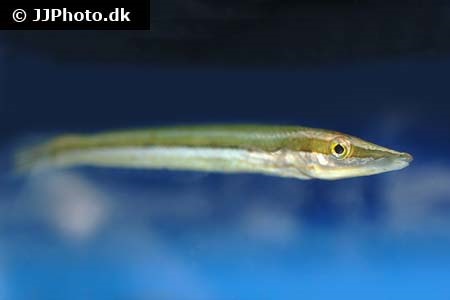Cheilio inermis

| Latin name | Cheilio inermis - (Forsskål, 1775) |
|---|---|
| Local name | Cigar wrasse |
| Family | Labridae - Cheilio |
| Origin | East Indian Ocean, West Indian Ocean, Australia, The Red Sea, Indonesia, East Pacific, Central/West Pacific |
| Max length | 50 cm (19.7") |
| Minimum volume |
1500 l (396 gal) |
|---|---|
| Hardiness |
Average |
| Suitable for aquarium |
Suitable with care |
| Reef safe |
Reef safe with caution |
| Aggressiveness | Docile but might be aggressive towards similar species |
| Recommended |
Larger crustaceans (Shrimp, crabs...) Small crustaceans (Krill, mysis, artemia...) Zooplankton (Cyclops, pods...) |
|---|
This species is known to jump out of open aquaria.
This species can be a threat towards small crustaceans, e.g. small shrimp.
This species needs a minimum of 2 inch (5 cm) of sand in the aquarium bottom, so it can dig itself down when afraid or needing to sleep.
This species will better acclimatize to the aquarium`s condition if introduced, when young.
Very small individuals can be very delicate.
In the aquarium the colour of this species can become matte.
Food with plenty of pigment and generally a varied diet of high quality can help alleviate colour loss.
This species comes in multiple color variations which can make identification problematic.
This species is very shy and docile, so one should be careful when keeping it with more aggressive fish.
This species can change gender from female to male.
When a male is needed, a female changes sex and takes on the role.
The Cheilio is a single species genus, which greatly resembles the Hologymnosus species.
They are large and very active fish which require a lot of space, but otherwise they are well suited to aquaria.
They will dig themselves into the sand at night.
Wrasses are nearly always seen in reef aquaria, since many of the species are both attractive and useful in battling a range of unwanted invertebrates like i.e. flatworms, pyramide snails.
These fish live of everything from zooplankton to large crustaceans, sea urchins and the like.
The needs and behaviour of Wrasses vary greatly, so it is vital to familiarize oneself with the specific species before buying one.
| Aquarium trade | Yes |
|---|---|
| Distribution | Indo-Pacific: Red Sea and East Africa to the Hawaiian and Easter islands, north to southern Japan, south to Lord Howe Island. |
| English common names |
Sharpnose wrasse Sharp-nosed rainbowfish Cigar wrasse |
| French common names |
Longue girelle Pêche madame |
Scott W. Michael. 2009. Wrasses and Parrotfishes (Reef Fishes Series Book 5) - TFH Publications / Microcosm Ltd. - (English)

